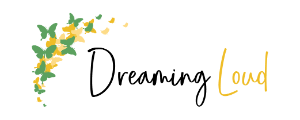Keeping your money in a savings account is not the best investment plan because of low returns ; but if you’re someone who likes to have emergency funds in liquid cash or if you are saving up for a particular something like a house down-payment or vacation or to invest on higher-return investments. Opening a savings account is an ideal way to park your money and earn interest rather than stashing it in checking accounts where you get negligible or no interest.
Saving Account 101:
What is a Savings Account?
A savings account is a type of bank account where you save your money while earning interest. Savings accounts are federally insured by FDIC (banks) or NCUA (credit unions) which means up to $250,000 of the money in your account will be recovered if the bank collapses.
HYSA or High Yield Savings Account is a savings account that pays 20-25 times more than a standard savings account. Online banks typically pay high yield to compare to physical banks or some credit unions since their overhead is lower.
Advantages of Savings Account
- Earn some extra cash
- Saving accounts are insured by FDIC or NCUA.
- Withdraw at any time.
- Online access to your funds 24×7. You can also pay your bills with your savings account.
- Minimal or no monthly fee.
- You can open a savings account with $0 down.
Disadvantages of Savings Accounts
- Low-interest rates
- The interest you earn is taxable.
Tip- Save your extra funds in different types of savings ex-college funds can be saved in a 529 plan where the interest you yield is tax-free.
How is Interest Calculated on a Savings Account?
The interest on all savings accounts is calculated as compound interest. With compound interest, the bank calculates interest and adds it to the balance several times per year (daily or weekly or monthly). This way the money you earned (principal amount + interest) generates additional interest.
In order to increase your returns either make frequent periodic payments into your savings account instead of annual payment Or maintain a higher account balance.
What are APY and Interest Rates?
Annual percentage yield (APY) is the total interest earned on your savings account for over one year, factoring the compound interest. While the Interest rate (APR) is the yearly rate applied to your balance without taking compound interest into account.
I have listed APY for all the high yield savings accounts below. But if you are curious to know how an APY is calculated, the Federal Deposit Insurance Corporation (FDIC) provides the mathematical formula on its website.
Best High Yield Online Savings Accounts For 2020
HSBC Direct Savings– 2.05% APY
- Minimum Balance-$1
- Monthly fee- $0
- Interest compounded- monthly
- Link to open Account HERE and Terms & Conditions HERE
Vio Bank High Yield Online Savings Account – 1.95% APY
- Minimum Balance- $100
- Monthly fee- $0
- Interest compounded- daily
- Link to open Account HERE
Ufb Direct High Yield Saving– 2.00 % APY
- Min Balance to earn APY- $10
- Min Balance to avoid a fee- $100
- Monthly fee- $0
- Interest compounded- daily
- Link to open Account HERE
Nationwide My Savings – 1.90% APY
- Min balance- $0
- Min balance to open- $100
- Monthly fee- $0
- Interest compounded- daily
- Link to open Account HERE
Comenity Direct High Yield Saving– 1.90% APY
- Min balance- $0
- Min balance to open- $100
- Monthly fee- $0
- Interest compounded- daily
- Link to open Account HERE
Note the rates may vary daily. I will frequently update this list, so make sure you can check the post periodically for the updated rates
Shop this Outfit
Mango Coat (on sale; wearing size S) | Everlane Sweater (last seen here; similar here) | AG Jeans (on sale; wearing size 25, 27 in other brands like Levis) | Faux Fur boots (reviewed here) | Satchel










0 Comments